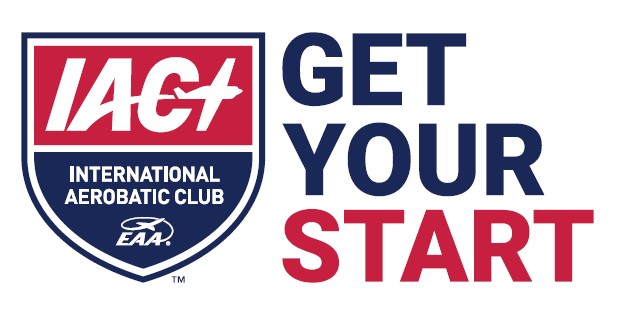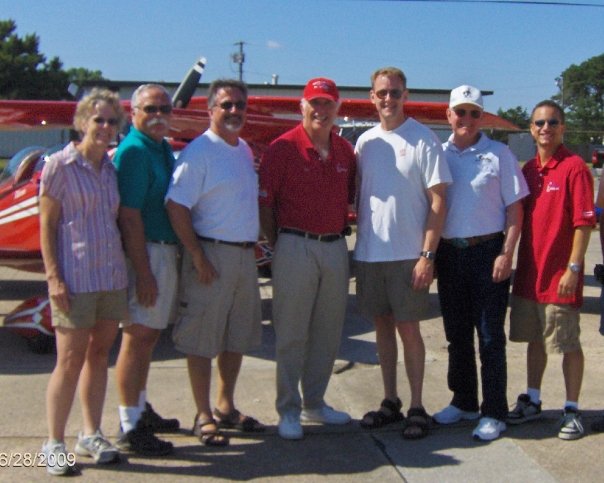May 2021 - In the Loop Exclusive Content

Some of us somewhat “long time” members of IAC have been encouraged over the years to write a short encapsulation of our journey into the world of aerobatics and what part IAC has played in that journey. Certainly, this is not intended to be a history lesson but citing some instances early on in my career in aerobatics I thought some recollections might be appropriate.
At age 8, as WWII ended many military pilots all wanted to buy a small plane and buzz around in the air, and so I got my first flight in a Aeronca Champ 7AC with my brother, a 23 year old veteran Vought F4U Corsair pilot from the Pacific campaign.
On to college in Maryland and flying in a college flying club that owned an Aeronca Champ, Taylorcraft, and a Stinson Voyager. I got my license on my 17th birthday and had my first “engine out” over Washington, D.C. making an emergency landing on a dual lane avenue in the median strip.
Fast forward through college, dental school and then my service in the Navy as a dentist. In 1964 while teaching in the U.S. Navy Dental School, I was approached by two other professors who wanted to fly. They told me about a used Spezio Tu-holer aircraft parked in a barn in Pennsylvania, which was part of an estate up for sale. I became a 1/3 part owner of the little two-place low-wing open cockpit homebuilt “sport aircraft”. Since I was the only one with a license it was virtually my own aircraft.
Being a little cautious in rolling and looping this open cockpit aircraft I began looking for a more robust “steed”. My purchase was a beautiful Pitts S-1S located in Butler-Gram, Pennsylvania. I flew it home with only one hour of instruction in a two-place Pitts and two landings in my log book.
I am relating all of this to say emphatically that this is not the way “to do it”! Acro at that time was a little different. Few aerobatic aircraft had radios, most were hand-propped, no navigational avionics so training was , at least for me, mostly done by a someone on the ground using a hand held tape recorder, which you listened to after you landed.
I remember vividly my first loop in the Pitts, or more appropriately my first attempt! Just about at the top I ran out of energy, stalled inverted, and probably did my first inverted spin. I don’t really remember anything much after the stall except
I thought I was spinning. Again, all I remember was miraculously pulling out vigorously and the ground was VERY close. My observer recounts that I missed the ground by at least 50 feet!
After that episode I parked my airplane until I called and went to Florida to fly with Bill Thomas. Here’s the point: Get the best training you can get, think about it as your 10 million dollar insurance policy. Put another way, how much do you value your life?

We were fortunate to have an IAC chapter in Washington, D.C. which I joined, IAC chapter 11. (Photo right, Bill in red shirt center with chapter 11 members). And, to this day I believe it was the best thing in aerobatics that I ever did. The camaraderie that engulfed that group helped many of those chapter members to go on and earn numerous aerobatic contest awards over many years.
Traveling to contests in the “early years” also was a little different. Imagine being in an open cockpit single place Pitts with no radios and only a sectional chart finding your way to a contest. More than one time I wound up with an unscheduled stop, where you could ask additional directions. Other “Minor deviations from standard FAA regulations” will not be formalized here, but perhaps can be recounted in person sometime on a one-to-one basis.
The thrill of competing in a contest cannot be described adequately, it must be experienced in the flesh! You are on stage, all by your little self, with everyone watching. Concentrate, no mistakes now, good figure, now on to the next one, finally it is completed. Wow, did it with no mistakes, I think… Now down to landing and looking at my scores. Five judges were watching me and giving me grades so how did I do?
No matter how many contests you may participate in, I guarantee there will always be “butterflies” in your belly just as you are about to enter into the first figure, be it primary, intermediate, or advanced.
Bill was inducted into the IAC Hall of Fame in 2008. You can read more about Bill in this article in the January issue of Sport Aerobatics;  Jan2009SAERO HoF Finagin.pdf
Jan2009SAERO HoF Finagin.pdf

